Fashion is a universal language, transcending borders and cultures. From elegant gowns to casual jumpsuits, women’s clothing has evolved over centuries, reflecting changing social norms, technological advancements, and artistic expressions. This blog post will explore ten of the most famous dress for women, each with its own unique history, cultural significance, and enduring appeal.
10. The T-Shirt Dress
- Origin: The t-shirt dress evolved from the classic t-shirt, gaining popularity as a casual and comfortable option for everyday wear.
- Key Characteristics: A simple and versatile dress made from t-shirt material, often featuring a relaxed fit and minimal embellishments.
- Versatility: The t-shirt dress can be dressed up with accessories or worn casually with sneakers and sandals.
The t-shirt dress has become a wardrobe staple for women worldwide, offering a blend of comfort, style, and versatility famous dress.
Evolution from Undergarment to Fashion Icon:
- Humble Beginnings: The t-shirt dress has its roots in the humble t-shirt, originally designed as an undergarment for men.
- Rise to Prominence: In the mid-20th century, the t-shirt transitioned from undergarment to casual outerwear. As social norms relaxed, women began to embrace the t-shirt as a comfortable and practical clothing option.
- The Birth of the T-Shirt Dress: The evolution into a dress likely occurred organically, with women adapting longer t-shirts as a simple and comfortable alternative to traditional dresses.
Key Characteristics:
- Simple Silhouette: The t-shirt dress typically features a relaxed fit, often with a crew neck or V-neck.
- Versatile Lengths: They can range from mini to maxi lengths, offering a variety of styles to suit different preferences and occasions.
- Fabric Choices: T-shirt dresses are commonly made from soft and breathable fabrics like cotton, jersey, or linen, ensuring comfort and ease of movement.
- Minimalist Design: Often featuring minimal embellishments, the t-shirt dress emphasizes simplicity and effortless style.
Styling Versatility:
- Casual Chic: Pair a t-shirt dress with sneakers, sandals, or boots for a casual and effortless look. Add a denim jacket or cardigan for extra layers.
- Elevated Style: Dress up a t-shirt dress with heels, statement jewelry, and a clutch for a more sophisticated look.
- Accessorize: Experiment with different accessories to personalize your look. Belts, scarves, hats, and sunglasses can instantly elevate a simple t-shirt dress.
Cultural Impact:
- Comfort and Empowerment: The t-shirt dress embodies a shift towards comfort and practicality in women’s fashion. It represents a move away from restrictive and uncomfortable clothing towards more relaxed and empowering styles.
- Versatility and Affordability: Its versatility and affordability make it accessible to women of all ages and backgrounds.
Conclusion:
The t-shirt dress is a testament to the evolution of women’s fashion. From its humble beginnings as a simple undergarment, it has emerged as a versatile and stylish option for women worldwide famous dress. Its enduring popularity reflects its ability to seamlessly blend comfort, style, and practicality.
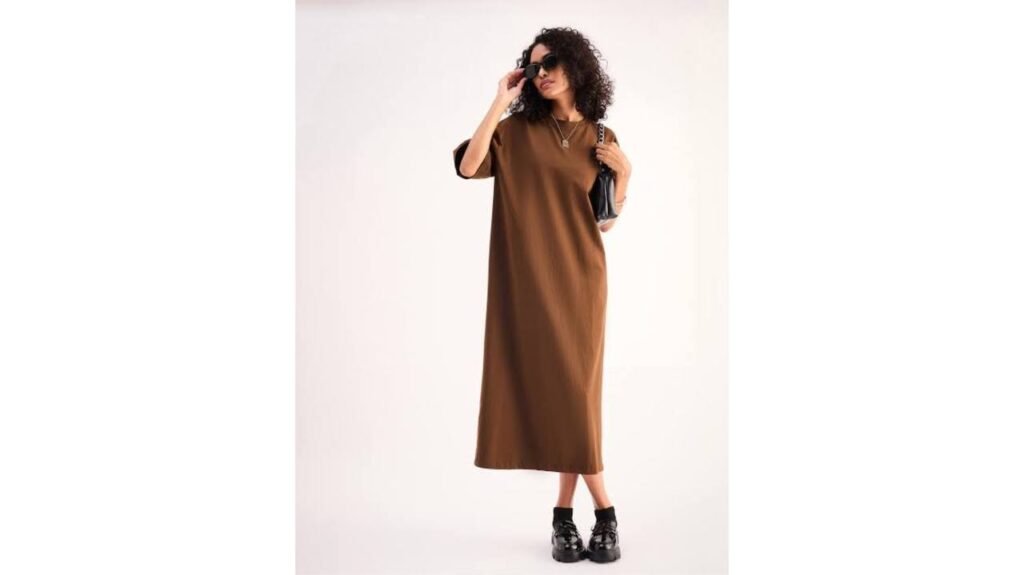
9. The Bodycon Dress
- Origin: The bodycon dress gained popularity in the 1990s and early 2000s, emphasizing a figure-hugging silhouette.
- Key Characteristics: Made from stretchy fabrics like spandex or jersey, the bodycon dress accentuates curves and creates a sleek, sophisticated look.
- Versatility: While often associated with evening wear, bodycon dresses can also be styled for casual occasions with the right accessories.
The bodycon dress, short for “body-conscious,” is a figure-hugging garment designed to accentuate and celebrate curves.
Key Characteristics:
- Fit: As the name suggests, bodycon dresses are known for their snug fit, clinging closely to the body’s contours.
- Fabric: Typically crafted from stretchy and flexible fabrics like spandex, jersey, and knit, allowing for ease of movement while maintaining its shape.
- Silhouette: The defining feature is its form-fitting silhouette, which emphasizes the wearer’s natural curves.
- Length: Available in various lengths, including mini, midi, and maxi, offering versatility for different occasions and personal preferences.
- Necklines and Sleeves: Bodycon dresses come in a wide range of styles, featuring various necklines (round, V-neck, sweetheart, off-the-shoulder) and sleeve lengths (sleeveless, short sleeves, long sleeves).
- Design Variations: From simple and sleek designs to those with intricate cutouts, embellishments, and patterns, bodycon dresses offer endless possibilities for personal expression.
History and Evolution:
- Early Influences: The concept of figure-hugging garments has roots in historical fashion, with examples found in ancient civilizations.
- Rise to Prominence: Bodycon dresses gained significant popularity in the late 1980s and early 1990s, thanks to designers like Hervé Léger, who pioneered the use of bandage material to create figure-sculpting dresses.
- Celebrity Influence: Celebrities like Kim Kardashian and Jennifer Lopez have popularized the bodycon dress, showcasing its versatility and making it a staple in red carpet fashion.
- Modern Interpretations: Today, bodycon dresses continue to evolve, with designers incorporating new fabrics, innovative silhouettes, and contemporary trends.
Styling Tips:
- Confidence is Key: The key to rocking a bodycon dress is confidence. Embrace your curves and choose a dress that makes you feel comfortable and beautiful.
- Accessorize Wisely: Keep accessories minimal to avoid overwhelming the dress. Opt for statement earrings, a simple necklace, and a clutch.
- Footwear Choices: Pair a bodycon dress with heels for a glamorous look or sneakers for a more casual vibe.
- Consider Undergarments: Choose the right undergarments to ensure a smooth and comfortable fit.
- Experiment with Layers: Add a jacket, blazer, or cardigan for a more versatile and layered look.
Overall:
The bodycon dress is a bold and empowering fashion statement that celebrates the female form. With its versatility and endless styling possibilities, it remains a popular choice for women of all ages and body shapes.
Disclaimer: This famous dress information is for general knowledge and informational purposes only.
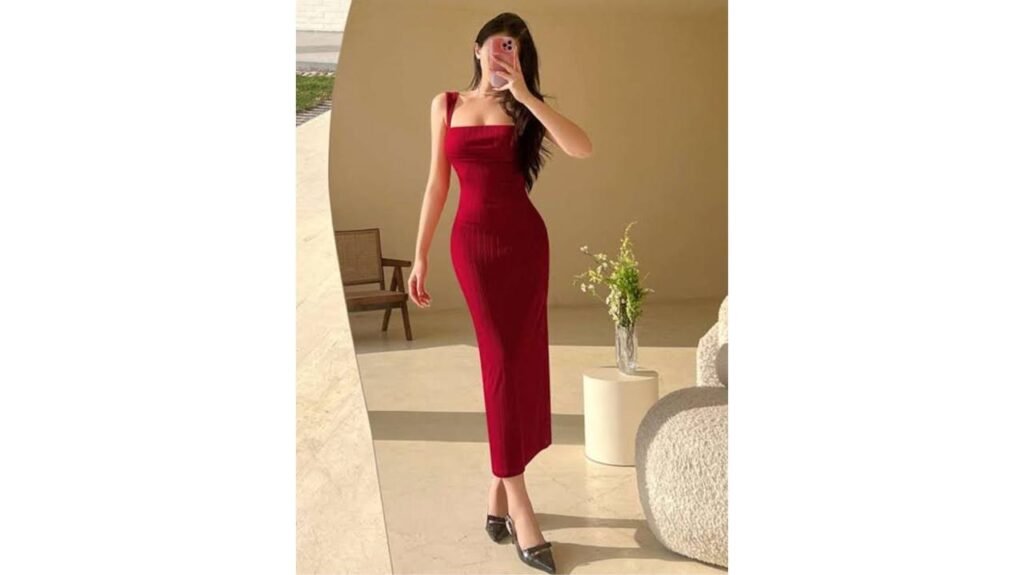
8. The Jumpsuit
- Origin: Initially designed for practical purposes, such as workwear, the jumpsuit gained popularity as a fashion statement in the 1970s.
- Key Characteristics: A one-piece garment with legs and sleeves, often featuring a wide range of styles, from casual to formal.
- Versatility: The jumpsuit is a versatile piece that can be dressed up with heels and jewelry or dressed down with sneakers and a jacket.
The jumpsuit, a one-piece garment covering the torso and legs, has evolved from utilitarian origins to a versatile fashion staple famous dress.
Early Origins:
- Practical Beginnings: Jumpsuits initially emerged as functional garments for specific purposes.
- Workwear: They were widely used in industrial settings, providing protection and ease of movement for workers.
- Military Use: Jumpsuits found application in military uniforms, particularly for pilots and parachutists.
Fashion Evolution:
- 1930s: Elsa Schiaparelli, a renowned fashion designer, introduced elegant jumpsuits for women, initially worn by a select few.
- 1960s and 70s: The jumpsuit gained significant popularity, particularly during the “Space Age” and the “Disco Era.” It became a symbol of freedom, comfort, and individuality.
- Iconic Figures: Celebrities like Jane Fonda and Diana Ross popularized the jumpsuit, further solidifying its place in fashion.
- Modern Era: Today, jumpsuits are available in a wide variety of styles, from casual denim jumpsuits to elegant evening wear.
Key Characteristics and Versatility:
- Styles:
- Casual: Denim jumpsuits, cotton jumpsuits, and relaxed-fit styles are perfect for everyday wear.
- Formal: Jumpsuits made of silk, satin, or lace, often featuring embellishments like sequins or beading, are suitable for special occasions.
- Playful: Jumpsuits with bold colors, prints, or unique designs offer a playful and expressive style.
- Versatility: Jumpsuits can be dressed up or down with the right accessories.
- Dress Up: Pair a formal jumpsuit with heels, statement jewelry, and a clutch for an elegant evening look.
- Dress Down: Combine a casual jumpsuit with sneakers, a denim jacket, and a crossbody bag for a relaxed and effortless style.
Cultural Impact:
- Symbol of Empowerment: The jumpsuit has often been associated with female empowerment, representing freedom of movement and a rejection of traditional gender norms.
- Enduring Appeal: The jumpsuit’s versatility and timeless appeal continue to make it a popular choice for women of all ages and styles.
Conclusion:
From its utilitarian origins to its current status as a fashion icon, the jumpsuit has come a long way. Its adaptability, comfort famous dress , and stylishness ensure that it will remain a wardrobe staple for years to come.
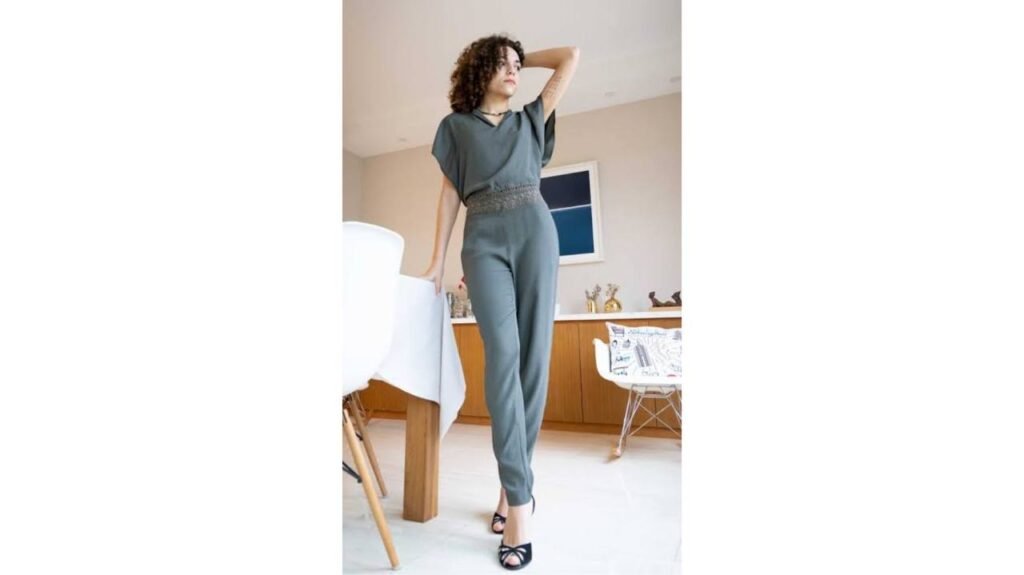
7. The Maxi Dress
- Origin: The maxi dress gained popularity in the 1960s and 1970s, inspired by bohemian and hippie fashion.
- Key Characteristics: A floor-length dress, often made of flowing fabrics like cotton or linen.
- Versatility: The maxi dress is perfect for warm weather and can be dressed up or down depending on the occasion.
The maxi dress, a timeless and versatile piece, has captivated fashion enthusiasts for decades. Here’s a deeper dive into its history, evolution, and enduring appeal:
Origins and Rise to Fame:
- 1960s Revolution: The maxi dress emerged as a symbol of the free-spirited and bohemian fashion movement of the 1960s. Designers like Oscar de la Renta embraced longer hemlines, creating flowing and elegant silhouettes that challenged the prevailing mini-skirt trend.
- A Symbol of Liberation: The maxi dress represented a shift towards a more relaxed and comfortable style of dressing for women. It embodied the spirit of freedom and self-expression that characterized the era.
- 1970s Flourishing: The maxi dress reached its peak popularity in the 1970s, becoming a staple of the bohemian and hippie fashion movements. Designers experimented with bold prints, vibrant colors, and flowing fabrics, creating iconic maxi dress styles.
Key Characteristics:
- Floor-Length Hemline: The defining feature of a maxi dress is its long, flowing hemline that reaches the ankles or even the floor.
- Versatile Silhouettes: Maxi dresses come in a wide array of silhouettes, from loose and flowing to fitted and form-fitting. Popular styles include:
- Wrap dresses: Elegant and flattering, often featuring a V-neckline.
- Slip dresses: Simple and elegant, often made from satin or silk.
- Empire waist dresses: Emphasize the waistline with a high, fitted bodice and a flowing skirt.
- Halter neck dresses: Feature a halter neckline for a sophisticated and elegant look.
- Variety of Fabrics: Maxi dresses are typically made from lightweight and breathable fabrics, such as cotton, linen, chiffon, and silk.
Styling the Maxi Dress:
- Casual Chic: Pair a maxi dress with sandals, sneakers, or espadrilles for a relaxed and effortless look. Add a denim jacket or a light cardigan for cooler evenings.
- Evening Glamour: Dress up a maxi dress with heels, statement jewelry, and a clutch for a sophisticated evening look.
- Beachwear: Opt for a maxi dress in a light and airy fabric, perfect for strolling along the beach or enjoying a summer evening.
- Accessorize: Experiment with different accessories, such as belts, scarves, and jewelry, to personalize your maxi dress look.
Enduring Appeal:
The maxi dress continues to be a popular and versatile choice for women of all ages. Its timeless elegance, comfort, and versatility make it a wardrobe staple for many famous dress.
- Flattering for All Body Types: Maxi dresses can be flattering for a variety of body shapes and sizes.
- Easy to Wear: They require minimal effort to style and are perfect for both casual and formal occasions.
- Comfortable and Cool: Ideal for warm weather, maxi dresses offer comfort and breathability.
Conclusion:
From its origins in the 1960s to its continued popularity today, the maxi dress has proven to be a timeless and iconic fashion piece famous dress. Its versatility, comfort, and elegant silhouette make it a beloved choice for women around the world.
Disclaimer: This information is for general knowledge and informational purposes only.
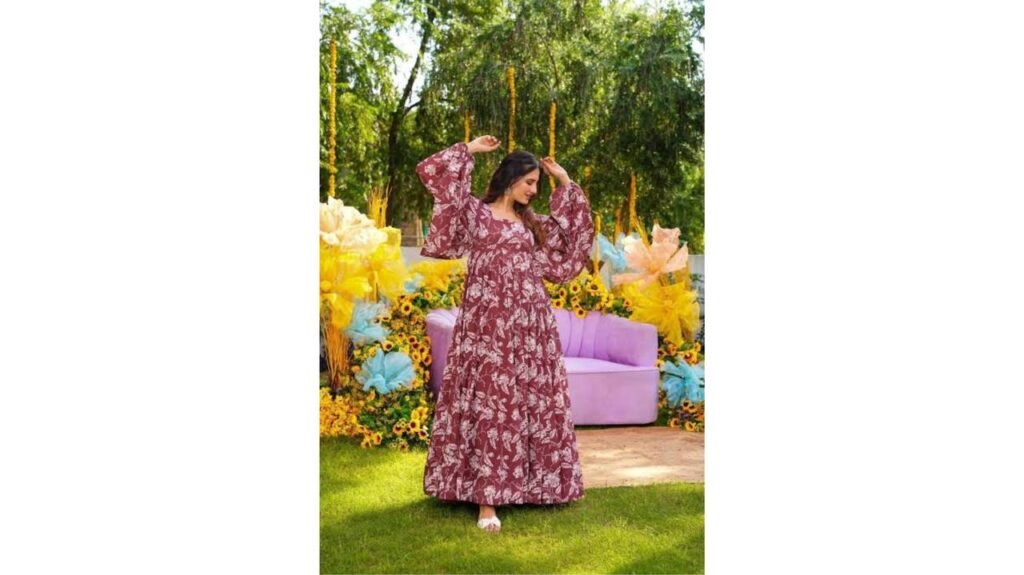
6. The Little White Dress (LWD)
- Origin: Inspired by the LBD, the LWD emerged as a summer staple, offering a fresh and airy alternative to its darker counterpart.
- Key Characteristics: A versatile and elegant famous dress in white, suitable for a variety of occasions, from beach vacations to summer weddings.
- Versatility: The LWD can be dressed up or down depending on the occasion and accessorized with different shoes and jewelry.
The Little White Dress (LWD) is a classic and versatile garment that has evolved significantly throughout history.
Early Influences:
- Bridal Wear: While the concept of a “little white dress” as a distinct fashion category emerged later, white dresses have been a significant part of bridal attire for centuries.
- Queen Victoria’s Influence: Queen Victoria’s choice to wear a white wedding dress in 1840 significantly popularized the trend, setting a precedent for future brides.
- Summer Fashion: White dresses have long been associated with summer fashion, offering a cool and refreshing alternative to darker colors.
Emergence of the LWD:
- Inspiration from the LBD: The rise of the “little black dress” in the 20th century, championed by Coco Chanel, paved the way for the LWD. The LWD offered a fresh and summery alternative to the classic LBD.
- Post-War Era: The post-war era saw a shift towards a more relaxed and casual approach to fashion, which contributed to the growing popularity of the LWD.
Key Characteristics:
- Color: The defining characteristic is, of course, the color white.
- Versatility: The LWD is incredibly versatile, suitable for a wide range of occasions, from casual outings to formal events.
- Styles: The LWD can take on various styles, including:
- Simple and Elegant: A classic shift dress or a minimalist slip dress.
- Romantic and Flowing: A flowing maxi dress or a dress with lace or ruffled details.
- Playful and Summery: A sundress or a dress with a playful print.
Styling the LWD:
- Accessorizing: The LWD can be accessorized in countless ways, depending on the occasion.
- Casual: Pair it with sandals, sneakers, and a denim jacket.
- Dressy: Add heels, statement jewelry, and a clutch.
- Beachy: Accessorize with a wide-brimmed hat, sunglasses, and beachy waves.
Cultural Significance:
- Symbol of Summer: The LWD has become synonymous with summer, evoking images of sunshine, beaches, and carefree days.
- Timeless Elegance: Like the LBD, the LWD is a timeless classic that continues to be a staple in women’s wardrobes.
Conclusion:
The Little White Dress is more than just a garment; it’s a symbol of summer, elegance, and effortless style famous dress. Its versatility and timeless appeal ensure that it will continue to be a beloved fashion staple for generations to come.
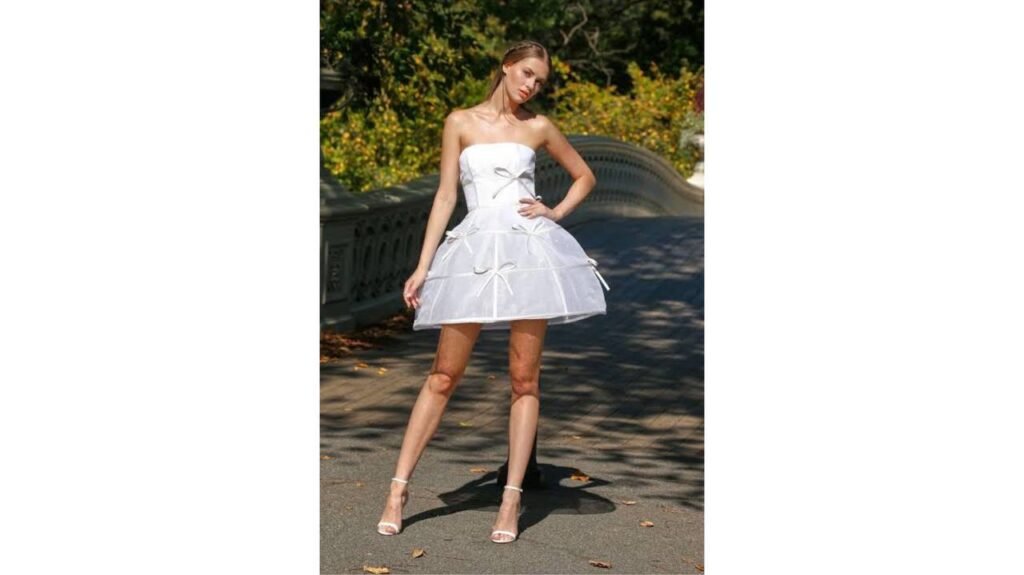
5. The Dirndl
- Origin: The dirndl is a traditional dress from the Alpine regions of Germany, Austria, and Switzerland.
- Key Characteristics: Typically consists of a bodice, blouse, full skirt, and apron.
- Cultural Significance: The dirndl is often worn during festivals and special occasions, and its style can vary depending on the specific region.
- Modern Interpretations: Modern interpretations of the dirndl often incorporate contemporary fabrics and designs while retaining its traditional charm.
The Dirndl: A Glimpse into Alpine Tradition
The dirndl is a traditional dress with deep roots in the Alpine regions of Germany, Austria, Switzerland, and South Tyrol. More than just clothing, it’s a symbol of cultural heritage, a reflection of regional identity, and a timeless fashion statement.
Key Characteristics:
- Bodice: The heart of the dirndl lies in its fitted bodice, often adorned with intricate embroidery, lace, or buttons. The neckline can vary from a simple scoop to a more elaborate sweetheart or square shape.
- Blouse: A dirndl blouse, typically with puffed sleeves and a ruffled neckline, is worn underneath the bodice.
- Skirt: A full, high-waisted skirt completes the ensemble. The length can vary, from knee-length to ankle-length, depending on regional preferences and personal style.
- Apron: The apron is an essential component of the dirndl. It can be made from various fabrics like linen, cotton, or velvet, and its color and design often signify the wearer’s marital status or regional origin.
Cultural Significance:
- Regional Variations: The style of the dirndl can vary significantly across different regions. For example, dirndls in Bavaria often feature bolder colors and more elaborate embroidery, while those in Austria may have a more understated elegance.
- Festival Wear: Dirndls are most commonly worn during festivals, celebrations, and special occasions like Oktoberfest. They add a touch of festive cheer and connect wearers to their cultural roots.
- Marital Status Symbolism: In some regions, the way the apron is tied can subtly convey marital status. A knot tied on the left side traditionally signifies that the wearer is single, famous dress while a knot tied on the right indicates that she is married or in a committed relationship. However, this tradition is not universally observed.
Modern Interpretations:
- Contemporary Styles: While traditional dirndls maintain their classic charm, contemporary designers have introduced modern interpretations, incorporating contemporary fabrics, colors, and silhouettes.
- Everyday Wear: Dirndls have evolved beyond traditional wear and are now sometimes incorporated into everyday fashion, particularly in regions where the tradition is deeply ingrained.
Wearing a Dirndl:
- Accessories: Dirndls are often accessorized with traditional jewelry, such as necklaces, earrings, and hair accessories.
- Shoes: Comfortable shoes like low-heeled boots or flats are typically worn with dirndls.
The dirndl is more than just a dress; it’s a cultural icon that embodies the spirit of Alpine traditions. It represents a connection to the past, a celebration of regional heritage, and a timeless expression of femininity.
Disclaimer: This information is for general knowledge and informational purposes only.
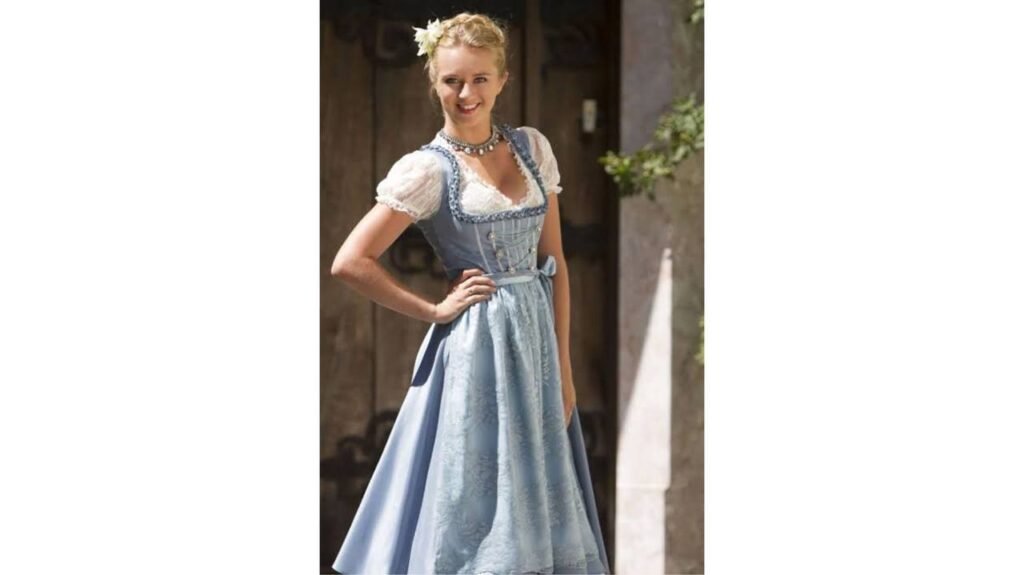
4. The Kimono
- Origin: The kimono, a traditional Japanese garment, is characterized by its T-shape and wide sleeves.
- Key Characteristics: Typically made of silk or other fine fabrics, the kimono is often adorned with intricate patterns and designs.
- Cultural Significance: The kimono is deeply rooted in Japanese culture and is worn during special occasions such as tea ceremonies, weddings, and festivals.
- Modern Influences: The kimono’s aesthetic has influenced Western fashion, inspiring designers to incorporate its elements into contemporary clothing.
The kimono is a traditional Japanese garment that has captivated the world with its elegance and artistry famous dress. Here’s a deeper dive into this iconic piece of clothing:
Origins and Evolution:
- Ancient Roots: While the exact origins are unclear, the kimono’s roots can be traced back to ancient Chinese clothing styles that were introduced to Japan centuries ago.
- Heian Period (794-1185): The kimono began to take its recognizable form during this period, evolving from a simple robe to a more elaborate and refined garment.
- Edo Period (1603-1868): The kimono reached its peak in popularity and became the dominant form of dress for both men and women across all social classes.
- Modern Era: With the influence of Western culture in the late 19th and early 20th centuries, the kimono gradually became less common in everyday wear. However, it remains an important part of Japanese culture and is still worn on special occasions.
Key Characteristics:
- T-Shape: The kimono’s distinctive T-shape is created by cutting the fabric in straight lines and then sewing it together. This allows for a wide range of movement and flexibility.
- Wide Sleeves: The long, wide sleeves, known as “sode,” are a hallmark of the kimono.
- Obi: The wide sash worn around the waist is an essential part of the kimono. The way the obi is tied varies depending on the occasion and the wearer’s social status.
- Fabrics and Patterns: Kimonos are typically made from luxurious fabrics such as silk, cotton, and linen. They are often adorned with intricate patterns and designs, famous dress including floral motifs, geometric shapes, and traditional Japanese symbols.
Types of Kimono:
- Furisode: A formal kimono with long, flowing sleeves, often worn by young, unmarried women.
- Tomesode: A formal kimono with black sleeves, typically worn by married women.
- Yukata: A lightweight summer kimono made of cotton.
- Haori: A short, informal jacket worn over a kimono.
Cultural Significance:
- Symbol of Identity: The kimono is a powerful symbol of Japanese identity and cultural heritage.
- Art Form: The art of kimono-making is highly valued, with skilled artisans creating intricate designs and using traditional techniques.
- Social Status: In the past, the type of kimono worn could indicate the wearer’s social status and marital status.
Modern Influences:
- Western Fashion: The kimono’s aesthetic has significantly influenced Western fashion, inspiring designers to incorporate its elements into contemporary clothing.
- Global Appreciation: The kimono is admired worldwide for its beauty, elegance, and cultural significance.
Conclusion:
The kimono is more than just a garment; it is a testament to the artistry, craftsmanship, and cultural richness of Japan. Its enduring legacy serves as a reminder of the importance of preserving and celebrating traditional arts and crafts.
Note: This information is for general knowledge and informational purposes only.
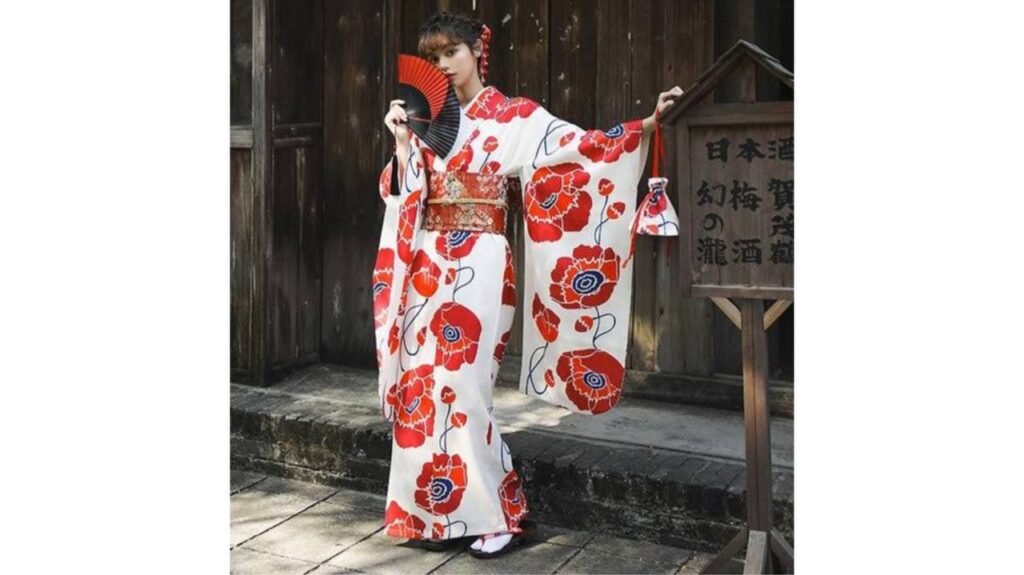
3. The Cheongsam/Qipao
- Origin: This elegant, form-fitting dress originated in China during the Qing Dynasty.
- Key Characteristics: Typically made of silk, the cheongsam features a high neck, long sleeves, and a side slit.
- Cultural Significance: The cheongsam is a symbol of Chinese femininity and elegance, often worn during special occasions and celebrations.
- Modern Interpretations: Modern interpretations of the cheongsam incorporate contemporary elements while retaining its classic charm.
The cheongsam, also known as the qipao, is a traditional Chinese one-piece dress that epitomizes elegance and femininity famous dress.
Here’s a deeper dive into its key characteristics and significance:
Key Characteristics:
- Silhouette: The cheongsam is characterized by its form-fitting silhouette, typically featuring a high neck, long sleeves, and a side slit that allows for ease of movement.
- Materials: Traditionally crafted from luxurious fabrics like silk, satin, or brocade, the cheongsam often incorporates intricate embroidery, beadwork, or other embellishments.
- Colors: While black is a classic choice, cheongsams come in a variety of colors, from vibrant reds and greens to delicate pastels.
- Evolution: Over time, the cheongsam has undergone various stylistic transformations, with modern interpretations incorporating contemporary elements while retaining its classic essence.
Historical and Cultural Significance:
- Origins: The cheongsam evolved from the traditional Manchu clothing of the Qing Dynasty. During the 1920s and 1930s, it gained popularity among women in China as a symbol of modernity and elegance.
- Social and Cultural Impact: The cheongsam became a symbol of female empowerment and a departure from traditional Chinese clothing styles. It was embraced by prominent figures, including actresses and socialites, further solidifying its status as a fashion icon.
- Cultural Representation: The cheongsam continues to be a significant symbol of Chinese culture, often worn during special occasions such as weddings, festivals, and cultural performances.
Modern Interpretations:
- Contemporary Designs: Modern designers have reimagined the cheongsam, incorporating contemporary elements like asymmetrical cuts, bold colors, and innovative fabrics.
- Global Influence: The cheongsam’s influence can be seen in Western fashion, with designers incorporating its elegant lines and distinctive features into their collections.
In Summary:
The cheongsam is more than just a dress; it’s a cultural icon that represents elegance, femininity, and the evolving spirit of Chinese fashion. Its enduring appeal lies in its timeless beauty, versatility, famous dress and ability to seamlessly blend tradition with contemporary style.
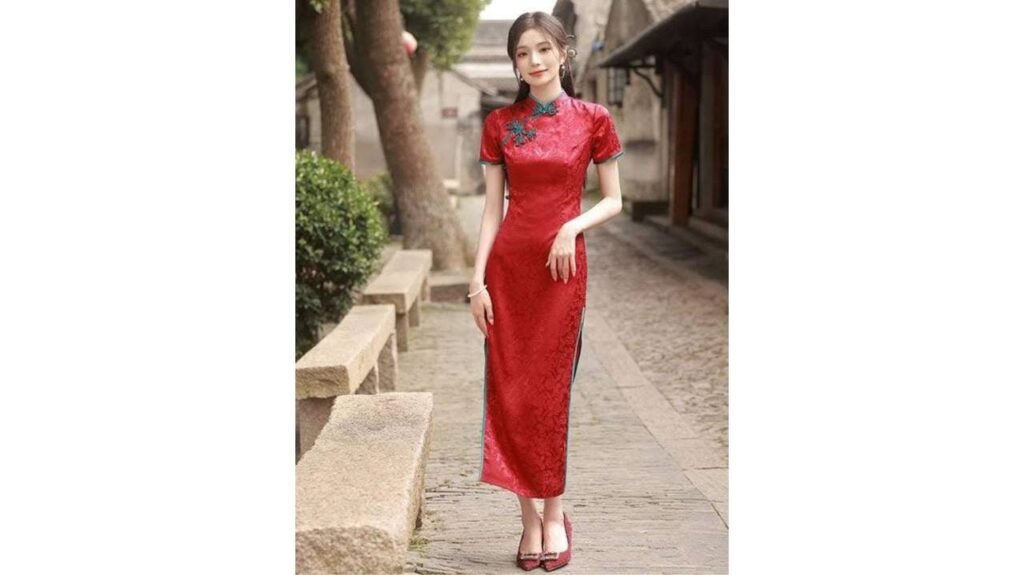
2. The Sari
- Origin: The sari, a draped garment, is an integral part of Indian culture, with origins dating back to ancient civilizations.
- Key Characteristics: A long, unstitched cloth draped around the body in various styles, often paired with a blouse and petticoat.
- Versatility: Available in a breathtaking array of fabrics, colors, and designs, the sari can be adapted for various occasions, from casual wear to formal events.
- Cultural Significance: The sari is more than just clothing; it represents Indian heritage, tradition, and femininity.
The sari is an iconic garment from the Indian subcontinent, known for its elegance, grace, and cultural significance. famous dress
Key Characteristics:
- Unstitched Cloth: A sari typically consists of a long, unstitched piece of fabric, usually between 4.5 to 9 yards in length, draped around the body in various styles.
- Drape Styles: There are numerous draping styles, each with its own regional variations. Some of the most common styles include:
- Nivi Style: A popular style originating from Andhra Pradesh, known for its elegant drape and pleats.
- Bengali Style: A simple yet elegant style with a focus on comfort.
- Gujarati Style: A unique style with a distinct Gujarati touch, often featuring a seedha pallu (straight pleat).
- Fabric: Sarees are made from a wide range of fabrics, including silk, cotton, chiffon, georgette, and more.
- Embellishments: Sarees can be adorned with various embellishments, such as embroidery, zari work, beadwork, and prints.
Cultural Significance:
- Symbol of Femininity: The sari is deeply rooted in Indian culture and is often seen as a symbol of femininity, grace, and tradition.
- Regional Variations: The style and design of the sari vary significantly across different regions of India, reflecting the diverse cultural heritage of the country.
- Special Occasions: Sarees are traditionally worn during weddings, festivals, and other special occasions.
- Modern Interpretations: In recent years, designers have experimented with contemporary interpretations of the sari, incorporating modern elements and fusing traditional techniques with contemporary aesthetics.
Wearing a Sari:
- Blouse: A short, tailored blouse is worn under the sari to cover the midriff.
- Petticoat: A petticoat or half-saree is worn underneath to hold the pleats of the sari in place.
- Drape: The sari is draped around the body in a specific manner, with one end draped over the shoulder.
The sari is more than just clothing; it is a cultural icon that embodies the rich heritage and traditions of India. It represents a unique blend of art, culture, and fashion, captivating the world with its timeless elegance and enduring appeal.
Disclaimer: This information is for general knowledge and informational purposes only.
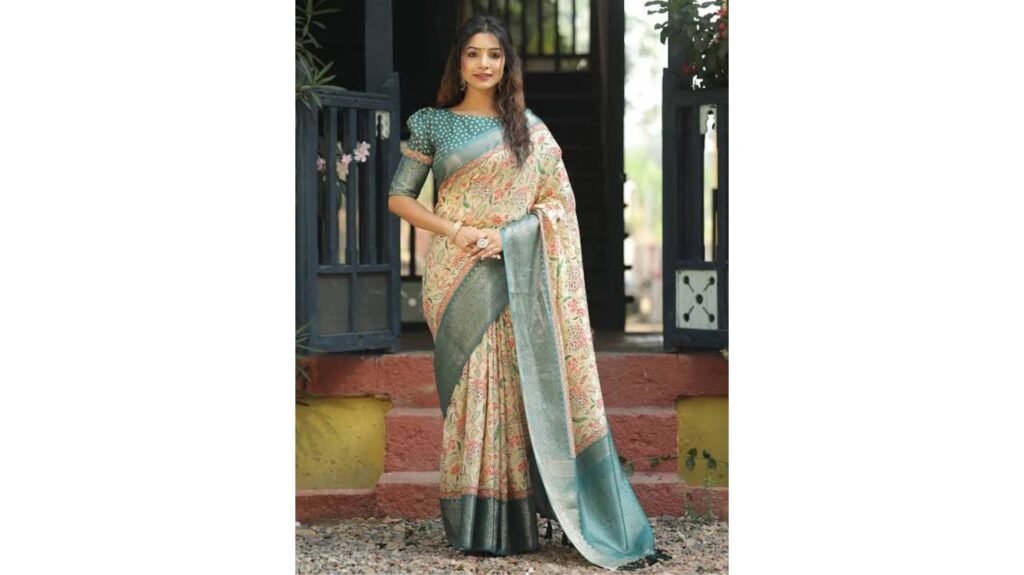
1. The Little Black Dress (LBD)
- Origin: Often attributed to Coco Chanel, the LBD emerged in the 1920s as a symbol of effortless chic and understated elegance.
- Key Characteristics: A simple, knee-length dress in black, often featuring a classic silhouette like a sheath or shift.
- Versatility: The LBD is incredibly versatile, suitable for a wide range of occasions, from cocktail parties to funerals.
- Enduring Appeal: Its timeless elegance and enduring popularity have made it a staple in every woman’s wardrobe.
The Little Black Dress (LBD) is more than just a garment; it’s a timeless fashion icon that has transcended generations and continues to captivate women worldwide.
Origins and Evolution:
While often attributed to Coco Chanel, the concept of a simple, elegant black dress existed before her. famous dress However, Chanel’s iconic 1926 design is credited with popularizing the LBD as a staple in women’s wardrobes.
- Pre-Chanel Era: Black clothing was often associated with mourning or servitude.
- Chanel’s Revolution: Chanel’s LBD broke these conventions. Her design was simple, elegant, and accessible, offering women a stylish and versatile option for various occasions.
- Post-Chanel: The LBD continued to evolve, adapting to changing fashion trends. Designers experimented with different silhouettes, embellishments, and lengths, while maintaining the core essence of simplicity and elegance.
Key Characteristics:
- Simplicity: The LBD is characterized by its understated elegance and minimalist design.
- Versatility: Its versatility is unmatched. It can be dressed up with statement jewelry and heels for a cocktail party or dressed down with flats and a cardigan for a casual outing.
- Timelessness: The LBD transcends fleeting fashion trends and remains a classic choice for women of all ages and body types.
- Adaptability: The LBD can be adapted to suit various occasions and personal styles through variations in neckline, sleeve length, and embellishments. famous dress
Cultural Impact:
- Symbol of Empowerment: The LBD has become a symbol of female empowerment, allowing women to feel confident and sophisticated.
- Cultural Icon: The LBD has been featured in countless movies, television shows, and music videos, solidifying its status as a cultural icon.
- Enduring Legacy: The LBD continues to inspire designers and influence fashion trends, ensuring its enduring legacy in the world of fashion.
Famous Examples:
- Audrey Hepburn in “Breakfast at Tiffany’s”: Hepburn’s iconic LBD in this film set a new standard for elegance and sophistication.
- Coco Chanel’s Original Design: Chanel’s original LBD remains a timeless and influential piece of fashion history.
Conclusion:
The Little Black Dress is more than just a garment; famous dress it’s a testament to timeless elegance, enduring style, and female empowerment. Its enduring popularity and versatility ensure that the LBD will continue to be a cherished staple in women’s wardrobes for generations to come.
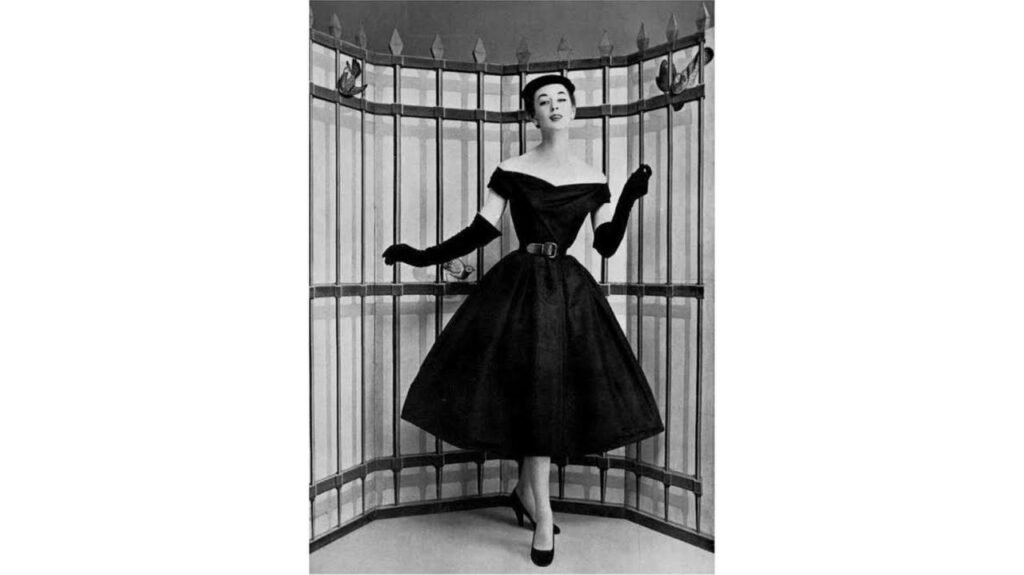
Conclusion:
These ten dresses represent a diverse range of styles, famous dress each with its own unique history and cultural significance. From the timeless elegance of the LBD to the vibrant colors of the sari, these garments have captivated women worldwide and continue to inspire designers and fashion enthusiasts alike.
Disclaimer: This list is not exhaustive, and the most famous dress will vary depending on individual preferences and cultural contexts.

